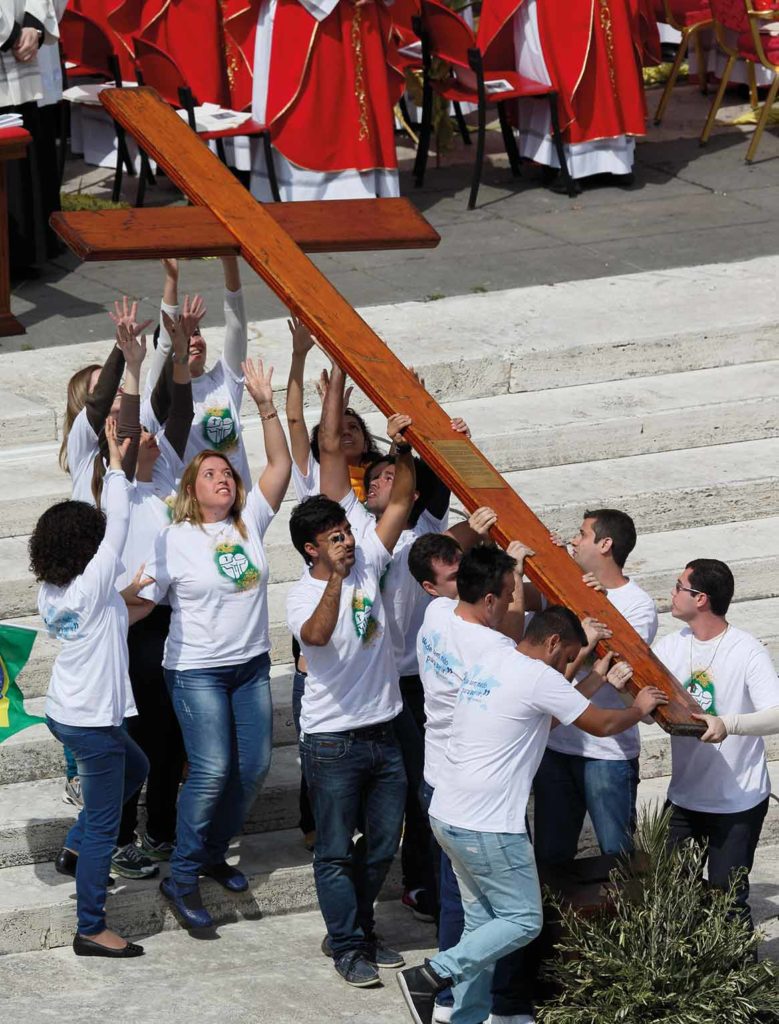It is good for the young pilgrim who wishes to participate in the World Youth Day (WYD) to be held in Krakow in July has a basic idea of what WYD is: a joint experience of prayer, personal encounter with Christ, an explosion of celebration and joy in the communication of the Christian faith in union with the successor of Peter whose mission is to confirm us in our faith. Pilgrims will find in WYD the opportunity to get to know the country and deepen their faith.
The baptism of Poland
WYD is not a fireworks display, but seeks to deepen the responsibility of baptism. For this reason, it is not by chance that it is framed in the celebration of the 1050th anniversary of the baptism of Poland in the person of its first king, Mieszko I, in the year 966.
WYD begins on Monday, July 26, with a solemn Mass celebrated by Cardinal Stanisław Dziwisz in the Błonia (countryside) of Krakow, a large esplanade in the center of the city where St. John Paul II celebrated Holy Mass on almost every apostolic journey to his homeland. It is also there that the first greeting to Pope Francis and the Stations of the Cross will take place on the evening of Friday the 29th. The young people will move from the Błonia to the town of Brzeg, on the outskirts of Krakow, very close to Wieliczka. There, on Saturday afternoon and evening, there will be a candlelight vigil with the Pope, and on Sunday the closing Mass of WYD.
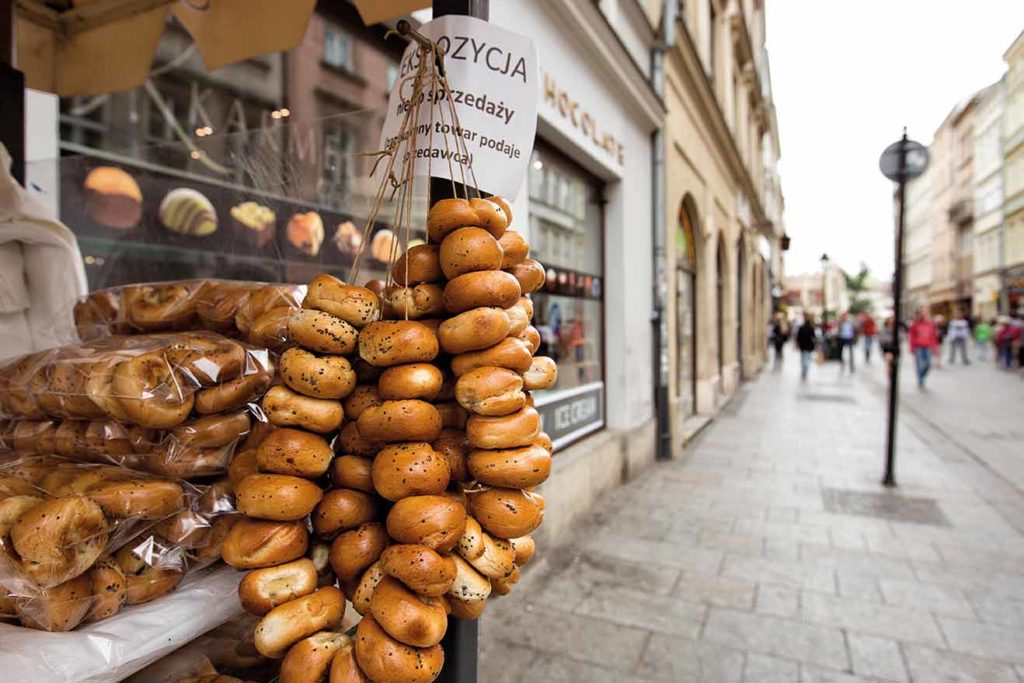
More than one hundred thousand pilgrims registered for WYD have expressed their desire to visit the Jasna Góra shrine in Częstochowa, 150 kilometers from Krakow. Undoubtedly the Czarna Madonna (Black Madonna) in Częstochowa, with its iconic image of the Lady with merciful eyes, was the place most visited by Karol Wojtyła. There lies the heart and center of Polish spirituality. It is an almost obligatory place for the Marian pilgrim of WYD. In addition to Częstochowa, there are other places of interest in connection with the Polish Pope.
The Sanctuary of the Divine Mercy
Łagiewniki is a district of Krakow located in the south of the city. It is a must for all WYD participants because the Shrine of Divine Mercy, where St. Faustina Kowalska lived and died, is located there. In the Year of Mercy it seems especially appropriate to visit this place. The diary of Faustina Kowalska was a text especially dear to Karol Wojtyła. Following a precise indication written in that diary, John Paul II established Mercy Sunday.
During World War II, the young Karol Wojtyła worked in the chemical factory. SolvayHe lived in the district of Borek Fałęcki, very close to Łagiewniki. As a priest and bishop he was many times in Łagiewniki. As pope, St. John Paul II twice visited the shrine of Divine Mercy. The first time was on June 7, 1997, during his sixth trip to Poland. He said then that he came to this shrine moved by an imperious need in his heart: "From this place came the proclamation of God's mercy that Jesus Christ himself wanted to give to our generation through Blessed Faustina. It is a clear and intelligible message for everyone. Every person can come here, look at the picture of the merciful Christ, at his Heart that radiates graces, and listen to what Faustina heard: 'Do not be afraid of anything, I am always with you' (Diary, 613).".
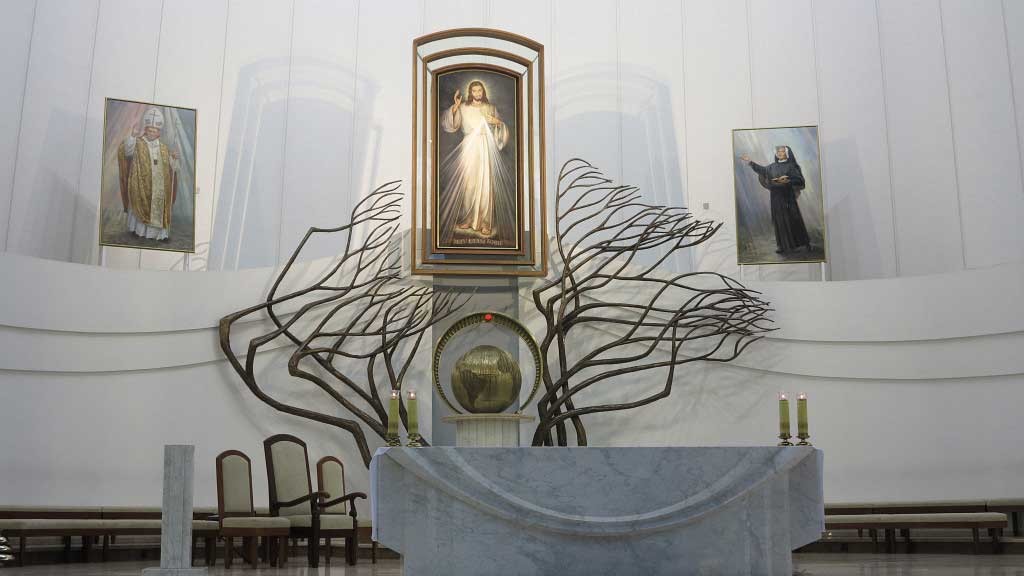
During his last pilgrimage to Poland, in August 2002, he consecrated the new Temple of Mercy, erected as a minor basilica. The dimensions of the new building make it possible to welcome thousands of pilgrims. The old church, or chapel, although of reduced capacity, remains the center of the Sanctuary: there is the original picture of the Merciful Jesus, painted according to the indications of St. Faustina, and her relics. From this place, Pope John Paul II consecrated the world to the Divine Mercy on August 19, 2002.
The Shrine of St. John Paul II
From the Sanctuary of the Divine Mercy it is a ten-minute walk to the Sanctuary of John Paul II, inside the John Paul II Center "Do not be afraid".. It is a complex of parks and buildings whose purpose is the study of the life and works of the Polish Pope, along with the dissemination of his devotion. All the buildings constructed are an example that Polish religious architecture can be beautiful.
The sanctuary church has a crypt in whose altar there is a reliquary with the blood of the saint and a number of chapels of great interest. For example, in the priestly chapel we have a replica of the chapel of St. Leonard, where Karol Wojtyła celebrated his first solemn Mass, and there is also the original slab that covered the tomb of John Paul II in the Vatican grottoes before he was proclaimed blessed and his relics were deposited in St. Peter's Basilica.
The shrine of Divine Mercy in Częstochowa, the shrine of the Mogiła Cross, the Auschwiz concentration camp and other places associated with St. Faustina Kowalska and St. John Paul II will play a special role in the development of WYD.
The main church is decorated with large mosaics, full of light and color, of undeniable artistic and symbolic value. They are the work of Father Marko Ivan Rupnik SJ, an author who has done other important works, such as the decoration of the crypt of San Giovanni Rotondo. In one of the chapels, that of Our Lady of Fatima, we can see the cassock worn by John Paul II on the day he suffered an attack, May 13, 1981, when he presided over the Wednesday general audience in St. Peter's Square. Blood stains impregnate the white fabric in many areas.
Kalwaria Zebrzydowska
Kalwaria Zebrzydowska is a Marian shrine founded in the early 17th century by the nobleman Mikolaj Zebrzydowski, modeled after the Church of the Crucifixion in Jerusalem. Its founder wanted to recall the mystery of the passion and death of Christ together with the sorrowful mysteries of Mary, so the different chapels are as if intertwined linking the passion of Christ to that of his Mother. It is governed by the Bernardine Fathers, and the whole complex belongs to the UNESCO World Heritage.
Anyone who has seen the movie "From a faraway country" (directed in 1981 by Polish Krzysztof Zanussi), which chronicles the life of Karol Wojtyła from 1926 until his appointment as Pope, you will remember how it begins. Karol Wojtyła as a child takes part in the Stations of the Cross during Holy Week in Kalwaria Zebrzydowska, 15 kilometers from Wadowice. When it was over, he goes with his father to eat at the pilgrim's inn, where they see the young actor who was staging the Lord who is drinking a beer. That stuck in his mind. So did his father's words at the death of his mother. He pointed to the Virgin Kalwariska and said: "from now on she will be your Mother"..
On August 18, 2002, John Paul II bid farewell to Mary in this Shrine with a moving silent prayer. It was the only apostolic journey during which he was not in Częstochowa. After more than an hour of active silence, he spoke: "How often I have experienced that the Mother of the Son of God turns her merciful eyes to the concerns of the afflicted man and obtains for him the grace to solve difficult problems, and he, poor in strength, is amazed by the strength and wisdom of divine Providence! When I visited this shrine in 1979, I asked you to pray for me as long as I live and after my death. Today I thank you and all the pilgrims of Kalwaria for these prayers, for the spiritual support I continually receive. And I continue to ask you: do not stop praying - I repeat it once again - as long as I live and after my death. And I, as always, will repay your benevolence by commending you all to the merciful Christ and his Mother.".
Wadowice. Church and house
Wadowice is the birthplace of the Polish Pope. It is also an obligatory place to visit to follow in his footsteps. To know a person is to go to his roots, to know the environment where he was born and where he lived his childhood. On June 16, 1999, he had a meeting with a group of faithful in the church square, and there he opened his heart, referring to his memories, without reading any written text, to the thread of his great memory.
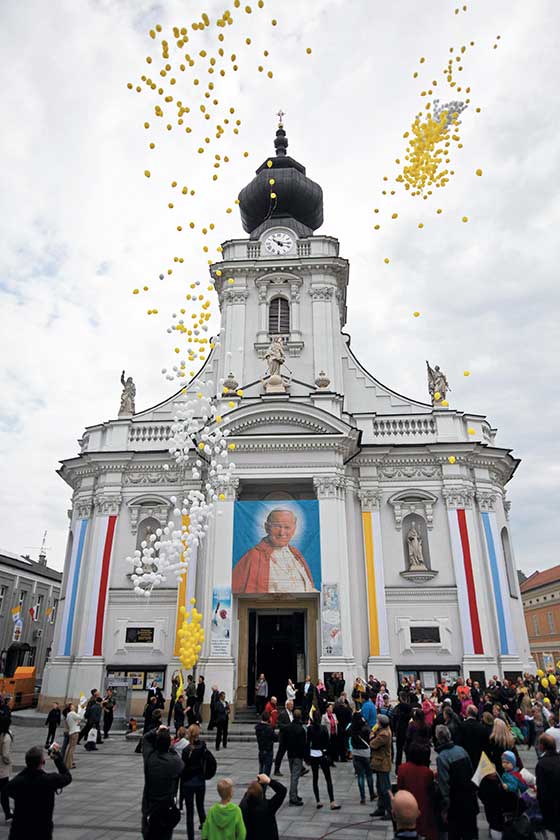
The very neat parish church of the Presentation of St. Mary is renovated, but it has the air of Wojtyła's younger years. In it we can see the baptismal font where little Karol was baptized, as well as the baptismal certificate. You can also visit a chapel dedicated to John Paul II and the renovated museum in the house where the Wojtyła family lived. From the kitchen window of the House-Museum you can see a sundial on the wall of the church that Lolek saw every day as he left his house, and which bears an expression in Polish: "Czas ucieka wieczność czeka" (time passes, eternity awaits).
Sanctuary of the Cross Mogiła
At the edge of Nowa Huta is the town of Mogiła, with the Cistercian monastery of the Holy Cross, erected in the 13th century. The crucified Christ of Mogiła has enjoyed great popular devotion for centuries. Karol Wojtyła went there many times, attracted by his great love for the Cross. It was at this shrine that he delivered his last homily as ordinary of Krakow on September 17, 1978 on the occasion of the Solemnity of the Exaltation of the Holy Cross. He said: "In a particular way I come to this place to commend to Our Lord and to his holy Mother the new Pope, elected a few weeks ago, the successor of Peter, Pope John Paul I."
Already as Pope he returned to this shrine of the Cross on June 9, 1979, and on that occasion he used for the first time the expression "new evangelization": "Our fathers in the past raised the cross in different places in Poland as a sign that the Gospel had arrived there, that evangelization was beginning, that it continued uninterruptedly. With this idea the first cross was also erected in Mogiła [...]. Now, on the threshold of the new millennium, we have received a new sign: for new times and new circumstances the Gospel is coming again. A new evangelization has begun, a second one, which is the same as the first.".
The WYD cross that the young people carry in their hands from one country to another is the sign of the transmission of the Christian faith. The cross, which is circling the globe, gives meaning to the history of the days.
Auschwitz
This Nazi concentration and extermination camp seems to me also a must-see place. I have met many Poles who have never been to this place, nor do they plan to. I understand that. But in my opinion we should all get to know it, as we have no such dramatic and horrifying vestige of the madness and horror of the wars of the 20th century as Auschwitz.
In Auschwitz, the German name for the Polish city of Oświęcim (neither word is easy for Spanish speakers to pronounce), there were three concentration camps. The first two have been preserved. "Auschwitz 1" is a museum where you visit the barracks built in well-made, Austrian-made brick of the late 19th century (it should be remembered that that part of Poland, Galitzia, belonged at that time to the Austro-Hungarian Empire). The second camp is Auschwitz-Birkenau. Built during the war, it is located four kilometers away from the first one. It is necessary to go to both camps. Saint John Paul II (June 7, 1979) and Benedict XVI (May 28, 2006) visited both camps. Both Popes also passed through the door with the inscription: Arbeit macht freiwhich sounds like a blasphemous mockery of the dignity of man and labor.
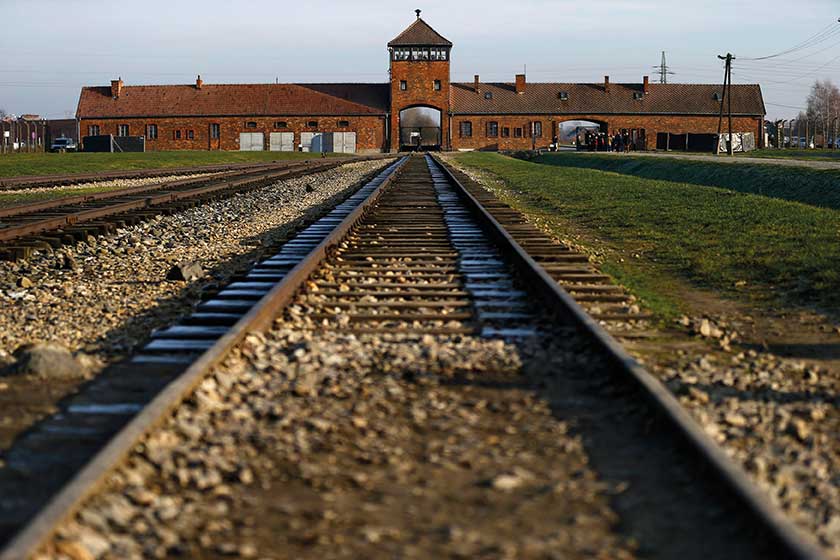
The two Popes - one Polish and the other German - evaluated their visit to Auschwitz with almost the same words: "I couldn't not come to this place.". These words express the obligation to do justice to the memory of the victims of the Nazi extermination. The two Popes prayed in the cell where St. Maximilian Kolbe died a martyr. On numerous occasions I have gone from Krakow to Auschwitz-Birkenau to walk at dusk along the large esplanades of the camp, crossed by rails, and to pray with the texts of the homily that John Paul II delivered in that very place: "'This is the victory that overcomes the world: our faith' (1 Jn 5:4). In this place of terrible devastation, which meant death for four million men from different nations, Father Maximilian, by offering himself willingly to death, in the bunker of hunger, for a brother, achieved a spiritual victory similar to that of Christ himself. This brother still lives today in this Polish land. But was Father Maximilian Kolbe the only one? Certainly, he achieved a victory that had immediate repercussions on his fellow prisoners and has repercussions even today in the Church and in the world. But surely many other victories were won. I think, for example, of the death, in the crematorium oven of the concentration camp, of the Carmelite Sister Benedicta of the Cross (known in the world as Edith Stein), an illustrious student of Husserl who has become an honor of contemporary German philosophy and who descended from a Hebrew family living in Wroclaw"..
And Pope Benedict XVI, on the same stage as his predecessor but 27 years later, cried out dramatically: "In a place like this one is speechless. Deep down one can only keep a silence of stupor, a silence that is an interior cry addressed to God: Why, Lord, did you keep silent? Why did you tolerate all this?". Right after Benedict XVI pronounced those words, a rainbow full of color was drawn in the sky. We could all see it. It was like a divine response, visible, clear, silent....
Krakow
For some pilgrims, the omnipresence of John Paul II in many areas of religious and social life in Poland can be a bit tiresome. This great presence is something natural, yes, but it is also true that good things should be given in small doses, because repeated in a routine way is tiring and annoying. That is why we must remember that in Krakow, as in the whole country, there is a great variety of places and spaces worth visiting that are not closely related to the Polish Pope. There are many other saints connected with this city that must be mentioned, starting with the martyred bishop St. Stanislaus and ending with St. Faustina and her message of Mercy: the queens Kinga and Jadwiga Andegaweńska, the friars Albert Chmielowski, Simon of Lipnicy or Raphael Kalinowski; the professors of the Jagiellonian University John Kanty and Bishop Joseph Sebastian Pelchar; and the servant Aniela Salawa. However, because of what John Paul II has meant for Poland and for the recent history of the Church, the places linked to his biography are the ones that stand out the most.
In Krakow it is worth admiring its old town, especially the market square, Wawel Hill with the cathedral and castle, and the Jewish quarter of Kazimierz. There are many sites that are connected with the life of Karol Wojtyła: the house at 10 Tyniecka Street, where he lived during his first year of university and the war, and where his father died; the parish church of St. Florian, where he began his youthful pastoral methods and which bore fruit in his book "Love and responsibility."or Calle de los Canónigos, where he lived in two of his houses -now museums- from 1953 to 1964. Let's highlight four places worth visiting:
1) The Bishop's Palace. It is located at Franciszkańska Street 3, as opposite is the Franciscan convent. Karol Wotyła entered this palace as a seminarian during the war. In its chapel he was ordained a priest - he alone - by Cardinal Sapieha. Already as titular bishop of Krakow (between 1964 and 1978) every day from 9.00 a.m. to 11.00 a.m. he worked in that sacred place looking at the Tabernacle. He spoke many times from the central window of that palace during the evening serenades for young people organized during his apostolic trips to Krakow.
2) Wawel Cathedral. This cathedral is a summary of the history of Poland. There, in its central altar, the relics of St. Stanislaus can be found. Kings were also crowned there. In its crypts are buried the great men of the religious, political and cultural life of Poland. In the oldest chapel, the Romanesque crypt of St. Leonard, Karol Wojtyła celebrated his first - his first three - solemn Masses on November 2, 1946. On the occasion of his golden jubilee of priesthood he wanted to celebrate Holy Mass again in that chapel. His thanksgiving lasted two hours. It was June 9, 1997.
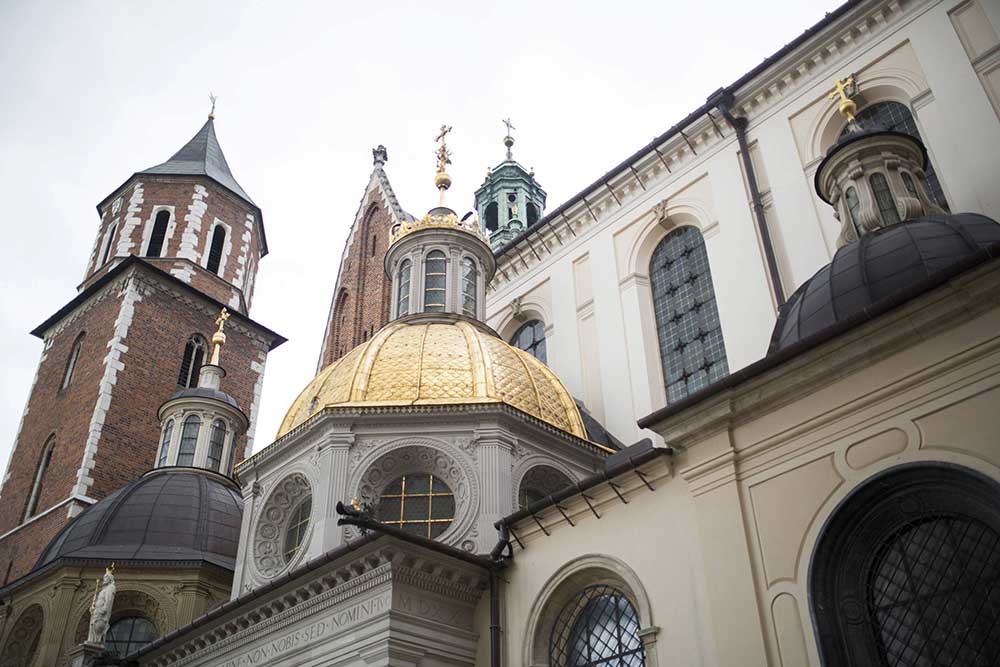
3) The church of Santa Maria. This church, located in the market square, offers the best artistic and religious work of all Polish heritage: the altarpiece of the Assumption of St. Mary. It is the work of the sculptor Wit Stwosz who in 1477 moved with his family from Nuremberg to Krakow. In this city he worked and realized this masterpiece. The costs alone (the entire budget of the city for one year) give an idea of the grandeur of the project. The altarpiece is articulated around a Marian trilogy that helps to pray. In the first scene we see Mary sleeping around the apostles. Next, Mary, body and soul, is elevated to heaven. Finally, the Virgin is crowned by the Trinity. During his first years as a priest, John Paul II used to hear confessions in this church. The confessional can still be seen today. Dr. Wanda Półtawska recalls in her book of memoirs. "Diary of a friendship" the occasion when he went to this church of St. Mary for confession. During confession, the young priest Wojtyła said to him: "Come to Holy Mass in the morning, and come every day!". Those words were for her like a "thunderclap": "I didn't ask him to be the spiritual director of my soul, I didn't tell him anything like that. It all came naturally when at the end he told me what no priest had ever told me before: Come to Holy Mass in the morning, and come every day! More than once I have thought that to tell the truth every confessor should give such simple advice.".
4) Jagiellonian University. It is the oldest university in Poland. Founded in 1360 by King Casimir III the Great, it was renovated and promoted by King Jagiellon and his wife Saint Jadwiga (Hedwig). Karol was a student at the University and received a doctorate in theology. honoris causa in 1983.
Krakow




